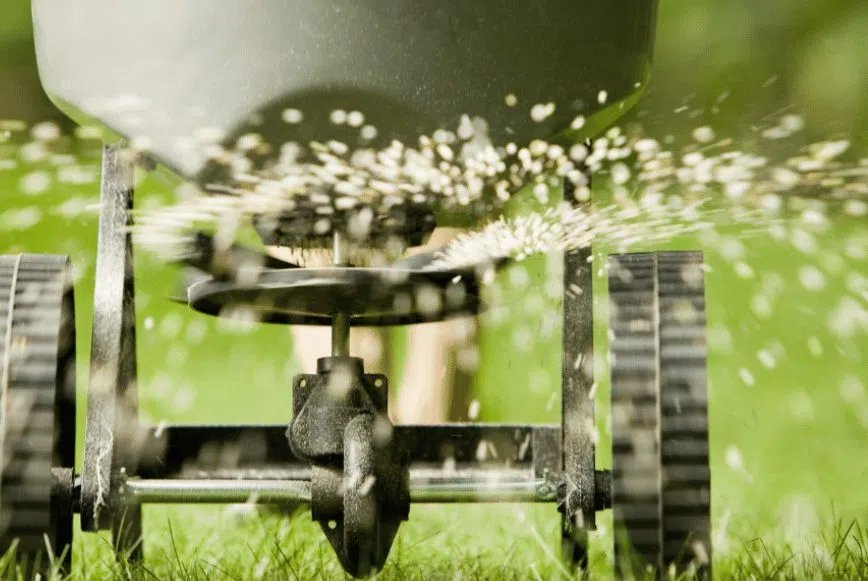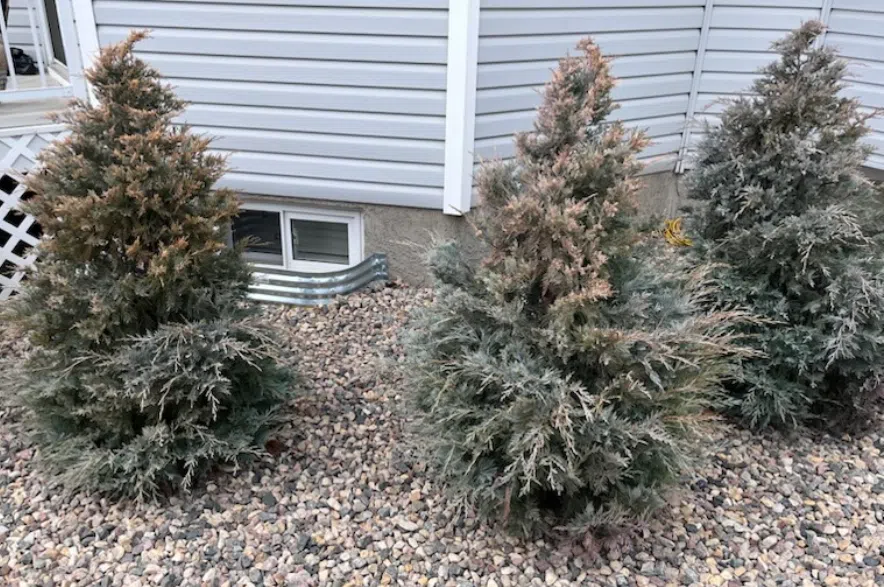Jill and Rick Van Duyvendyk answer all your gardening questions in Garden Talk on 650 CKOM and 980 CJME every Sunday morning at 9 a.m.
Here is a selection of questions and answers from this week’s show.
These questions and answers have been edited and condensed for clarity.
Q: Where can I buy alkaline tolerant grass seed for a lawn?
A: Look at Early’s Farm & Garden Centre in Saskatoon have some suitable grass seeds. They supply a lot of the the RMs, cities and golf courses and make their own blends.
Use a fertilizer that has sulphur in it to start lowering the pH (alkalinity) of the soil. You want it around 6.5 to seven. An elemental sulphur based fertilizer used for farms can still be used for lawns.
Don’t use blends of fertilizer without a fourth number — they all have nitrogen as the first number, phosphorus as the second number and potassium as the third number and the fourth number is sulphur. GroundKeeper fertilizer can be used on a lawn three times a year — in spring, summer and fall.
Read more:
- Garden Talk: Can I grow apricots in Saskatchewan?
- Garden Talk: Tips for planning a thriving home vegetable garden
- Garden Talk: What should I do now to get my Sask. garden ready for spring?
- Garden Talk: What flowers can I grow in a garden that gets only morning sun?
Q: How can I prevent snow mold on my lawn right now?
A: Once any ice starts melting, it’s going to be very moist underneath which provides great conditions for snow mold. As soon as the grass gets exposed, take a leaf rake and keep fluffing up your grass.
You’re not raking it so hard, you’re digging up the soil, it’s just a light fluffing to get the air into the grass. If snow mold does some damage, do some top dressing and reseeding in those areas.
You can use a snowblower on the lawn and spread the snow evenly onto any areas of the grass that are exposed already and that will melt really quickly.
Q: When’s a good time to rake the leaves on my lawn?
A: It is best to rake those leaves up as soon as possible. If we start getting some rain they’ll turn to mush. Put them into your compost and once they are broken down you can topdress with that broken down stuff on your grass.
Q: How early can I fertilize an established lawn and one planted last fall?
A: For the one planted last fall you can use a fertilizer like GroundKeeper, which has 10 as the second number. Most fertilizers zero as a second number. GroundKeeper is a 16-10-3-17-3 fertilizer and has some sulfur in it to help take up nutrients.
It’s a little bit early yet to fertlilize a newly planted lawn. Wait until the first week of May. You should wait until then to fertlilize an established lawn as well.
See Dutch Growers’ Complete Lawn Care Guide here.
Q: Will my Moonglow junipers planted two years ago recover from brown tops that appeared after the snow melted?
A:. They’ll be fine. Put on a pair of gloves and just rough them up a bit, knocking off all the brown, then around mid-May start fertilizing with 30-10-10, and do that every three weeks until mid-July. Use about two and a half litres of water mixed with the fertilizer each time.
It’s a good idea to wrap trees like that next year. The brown is because you’re getting reflection off the siding and off the snow. Shade them so they don’t get heat off the building so that they don’t turn brown.
Q: What can I do to fix black knot fungus in my cherry trees that makes the fruit turn black near the bottom before it is ripe?
A: It probably has another fungus in other than black knot, whoch will kill the plant itself and looks like doggy doodoo in the tree.
If you have a fungus in the fruit, use copper spray and apply it after flowering and again about three weeks later. Black knot needs to be treated with a combination of dormant oil and lime sulphur.
Q: What ground cover with a colour other than green can I use on a slope that gets some sun in the morning but none in the afternoon?
A: There’s a bunch of perennials that you could put in there that’ll give you some ground cover and you can things like hostas and junipers to cover some bigger
spaces. Coral bells (also known as heucheras) will give you some colour that still will tolerate the shade.
Q: Can I save a Sundancer poplar after the trunk was broken above the soil line?
A: Absolutely. Just trim it off on an angle where it’s damaged and it’ll come from the base again. Give it lots of fertilizer this summer and it’ll just take off.
Q: Can prune my roses, hydrangeas and potentilla right now?
A: Do all of them as soon as possible. Don’t prune lilacs, double flowering plum and flowering almond or forsythia now because you cut the blooms off, do it after they finish blooming.
Q: How can I deal with unwanted moss in the garden?
A: Moss grows because you have a lot of moisture, so put some gypsum into the soil to aerate it. Cedar mulch can also work because the big sticks in it create open air spaces too and the soil doesn’t get so compacted.
Q: Can I use 21-7-7 fertilizer that says it’s an acidifier on my deciduous trees?
A: Yes, especially if you’re in an alkaline area.
Q: When and how much should I prune back a hydrangea and when should I fertilize?
A: Prune it back right now at least a third to a half. You can start fertilizing around mid-May using a higher nitrogen fertilizer like a 30-10-10 because it also has an acid base. Add about three or four tablespoons of aluminum sulfate with it for better blooms.
Q: Can I use deer droppings to fertilize my lawn and garden?
A: Yes, but spread them out with a leaf rake rather than leave them in a big pile. They’re good fertilizer.
Q: What is a variety of pussy willow that will not get too tall?
A: They’re all pretty big but you can keep them pruned. There are dwarf willows like Blue Fox but they don’t have the fuzzy seed pods or try French pussy willow if you can find it.
Read more:












